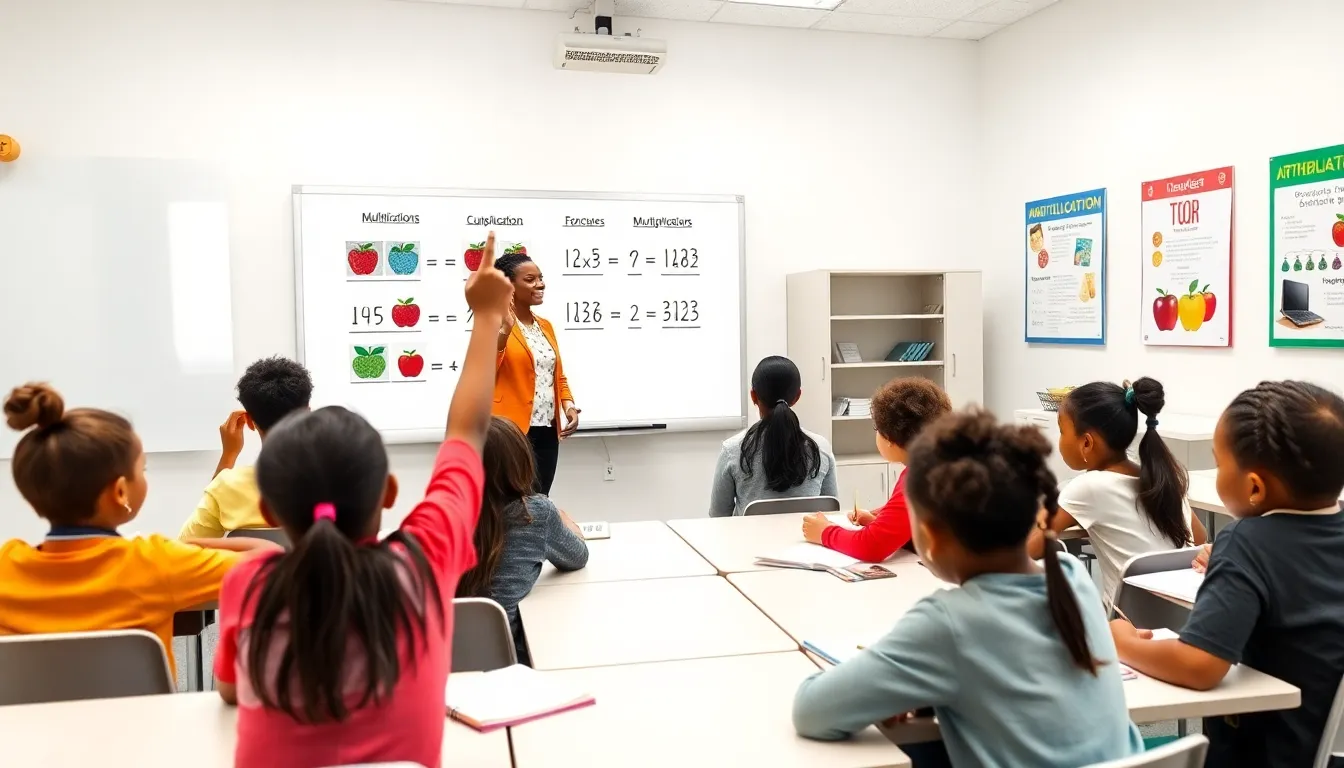Ever looked at a large multiplication problem and thought, “What fresh math sorcery is this?” Well, welcome to the world of 9632 x 97, where numbers collide and math magic happens. Don’t worry, it’s not as scary as it looks. You’re about to unravel the mystery behind this calculation, and with a little bit of math wizardry, you’ll find yourself breezing through it in no time. So grab your calculator, or don’t, and let’s jump into this numerical adventure.
9632×97

Multiplication is like the superhero of arithmetic. Instead of adding repeatedly, it allows a quick jump to the answer, saving both time and brainpower. By understanding the basics, one can tackle even the toughest multiplication problems with confidence. At its core, multiplication is simply repeated addition. For example, if you have three groups of four apples, you can either add four three times (4 + 4 + 4) or multiply (4 x 3), firmly establishing that both methods will give you the same result: twelve apples. This simple principle becomes the backbone for handling larger numbers, making intimidating problems manageable.
Grasping the language of multiplication also opens the door to understanding equations in physics, economics, and various scientific fields. It’s not just textbook math: it’s a life skill that enhances problem-solving and critical thinking.
The Steps to Multiply Large Numbers
When faced with a beastly multiplication problem like 9632 x 97, breaking it down into digestible steps can turn chaos into clarity. Here’s how:
Breaking Down 9632 x 97
Start by splitting the larger number, for instance, 97 can be split into 90 and 7. This way, you tackle smaller, easier calculations first. So, compute:
- 9632 x 90
- 9632 x 7
By chunking it that way, you allow yourself to focus on the individual components, rather than the overwhelming whole. Once you calculate both products, just add them together for the final answer.
Establishing the Problem
Before diving deep into the multiplication, confirm clarity of the numbers involved. Is 9632 indeed the number to multiply by 97? Double-checking prevents embarrassing errors that can derail the entire process. After all, you wouldn’t want to make a tiny misstep and end up calculating 9632 x 79 instead. Mistakes in math can lead you down a rabbit hole, so clarity is key.
Using Traditional Algorithms
Now, let’s investigate into the classic way to multiply large numbers, known as the traditional algorithm. This method involves several steps and some good old-fashioned pencil-and-paper:
- Write the numbers one on top of the other, aligning them by place value.
- Multiply the top number by the digit in the bottom number starting from the right (in this case, the 7 in 97).
- Repeat for the next digit (the 9 in 97) and remember to shift the beginning of your next answer one position to the left.
- Finally, add the two results together.
This method might seem old-school, but it still works effectively. It doesn’t matter if math has evolved: these foundational techniques stand the test of time. The traditional algorithm illustrates multiplication in a structured way, ensuring every detail is accounted for.
Using the Box Method
If the traditional approach feels a little too heavy on the brain, consider the box method. This visual approach breaks down multiplication into a manageable grid, offering greater clarity. Here’s how it goes:
- Create a box and split it into sections based on the digits of each number. For 9632, you have four sections.
- Write the parts of 97 (i.e., 90 and 7) along the top and left sides of the box.
- Multiply the sections to fill in the box. For example, where 90 meets 9600, you’ll get 864000, and where 7 meets 9600, it’ll give you 67200.
- Finally, add all the numbers inside the box to get your final product.
This method is particularly helpful for visual learners who wish to see how the numbers play together. Not only does it simplify the process, but it also tends to reduce mistakes.
Real-World Applications of 9632 x 97
So, why go through all the trouble of calculating 9632 x 97? The world outside is filled with practical applications for multiplication. Whether in finance, engineering, or even cooking, knowing how to multiply large numbers efficiently can impact decisions:
- Budgeting: When planning expenses for a project, multiplying costs by quantities can quickly determine how much one needs to spend.
- Construction: Architects and builders constantly face the need to calculate areas or material requirements, often using large multipliers.
- Cooking: Ever tried to double a recipe? You’ll find yourself multiplying ingredients to figure out how much you need for a gathering.
In all these scenarios, mastery of multiplication helps streamline efforts, saving time and ensuring accuracy. The ability to multiply large numbers instinctively opens doors to a wealth of opportunities.
